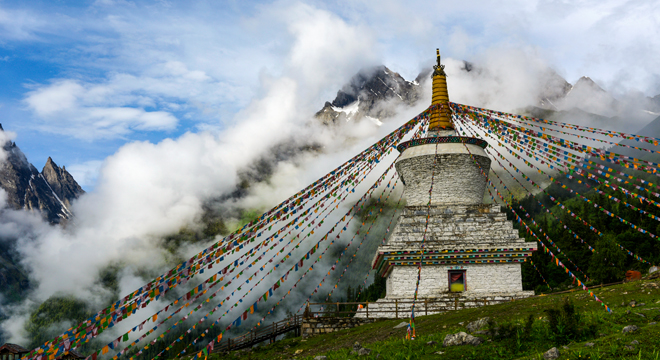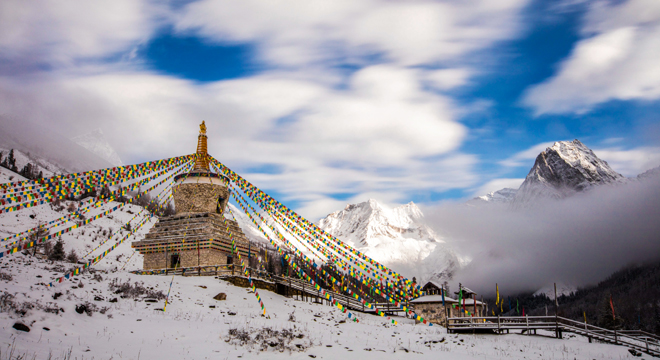Cultural Heritage and Ethnic Customs
Cultural heritage of Geopark includes ancient architecture, religious temples, and revolutionary historical sites. Wori Native Chieftain Office Village bear witness to the trimphs and declines of the Jiarong Tusi and the historical transformations they underwent. Religious temples adorned with murals, thangkas, and statues showcase the unique charm and exquisite artistry of Tibetan culture. Traditional Tibetan dance, Guozhuang, with its distinctive steps and rhythm, reflects the lifestyle and spirit of the Tibetan people. The art of Tibetan costumes, characterized by intricate hand embroidery and unique design styles, demonstrates the aesthetic and practical wisdom of the Tibetan people. Additionally, the geopark is rich in folklore, songs, and proverbs, oral traditions that contain the historical memory and life philosophy of the nation.
Wori Native Chieftain Office Village
The Wori Chieftain's Residence is an ancient building with significant historical and cultural value located in Xiaojin County, Aba Tibetan and Qiang Autonomous Prefecture, Sichuan Province. This residence is not only an important ancient battlefield where Emperor Qianlong fought in the battles of major and minor Jinchuan, but also renowned for its strong defensive capabilities, which resisted multiple artillery attacks during the 28-year-long Jinchuan War. The Wori Chieftain's Residence was built by the Wori Headmen in the 15th year of Emperor Qianlong's reign in the Qing Dynasty (1750) and served as an important commercial, cultural, and political center in the Aba region during the Ming and Qing dynasties. It was also a significant post on the ancient Tea-Horse Road. This residence not only displays the architectural style of the Jiarong Tibetan people, but also reflects the wisdom and creativity of the people at that time in military engineering. The buildings within the residence include the Nanjing building and the Diao building. The Nanjing building is a five-story, triple-eaves, four-cornered building with a pyramidal roof, constructed with stone and wood. The Diao building is a 36-meter-high, four-cornered structure made of wood and stone, shaped like a truncated pyramid. These buildings are not only uniquely and aesthetically designed but also retain the authentic flavor of the residence. The Wori Chieftain's Residence, integrating various functions such as watchtowers, library of Buddhist scriptures, study rooms, living quarters for the Chieftains and the living Buddha, dungeons, grinding rooms, and jewelry workshops, is a typical architectural fortress of the Jiarong Tibetan people. The Wori Chieftain's Residence is not only listed as a "Prefectural Key Cultural Relics Protection Unit" due to its historical and cultural value, but also attracts many tourists to visit because of its unique geographical location and architectural style. Located in the east of Xiaojin County, the residence is backed by Huangjia Mountain, with the Wori River flowing through the front, surrounded by mountains, and in a quiet environment, making it a good place to escape from the hustle and bustle. Tourists can feel the strong historical atmosphere here, explore every corner of this ancient residence, and experience its unique architectural style and cultural connotations.
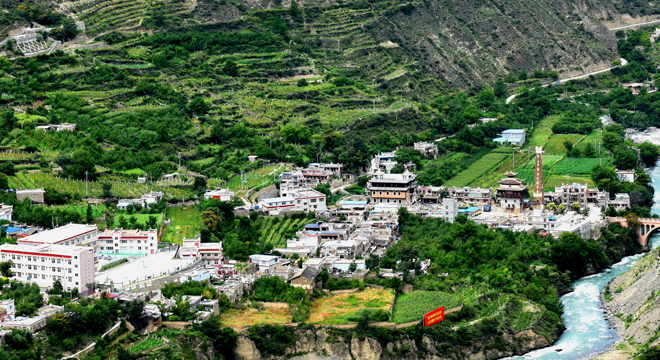
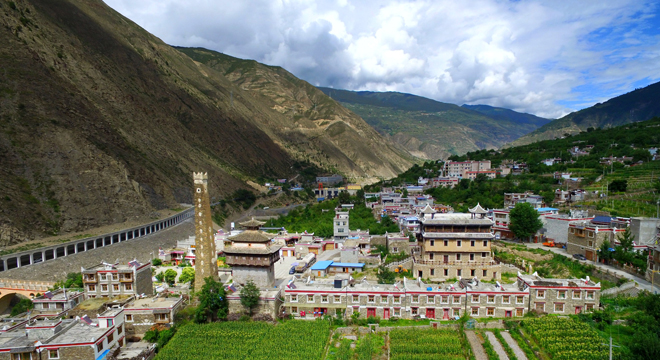
Memorial Site of Lianghekou Meeting
From June 26 to 28, 1935, the Central Committee of the CPC held a politically significant (expanded) meeting of the Political Bureau here, known as the "Lianghekou Meeting". This meeting was crucial for determining the strategic direction of the Red Army, particularly the strategy of "moving northward to establish a revolutionary base in Sichuan, Shaanxi, and Gansu", thus charting the course for China's revolutionary war. The Memorial Site of Lianghekou Meeting is renowned not only for its historical significance but also for its beautiful natural scenery and rich cultural landscapes. It is a tourist attraction that integrates red culture, natural scenery, and Jiarong Tibetan culture. The scenic area consists of "one hall, one site, one cemetery, one town, and one valley", including the Lianghekou Meeting Memorial Hall, the Lianghekou Meeting Site, the Cemetery for the Martyrs of the Long March of the Red Army, Lianghekou Town, and Hongqiao Valley. Hongqiao Valley is famous for its unique natural landscapes such as gorges, forests, seabuckthorn forests, waterfalls, streams, meadows, lakes, and alpine pastoral areas, showcasing exquisite, tranquil, quaint, peculiar, and magnificent ecological features. The Memorial Site of Lianghekou Meeting was successfully designated as a national 4A-level tourist attraction in 2019 and has become an important destination for red tourism and educational travel. The scenic area not only displays the history of the Long March of the Red Army but also provides an excellent place to learn and experience red culture and natural beauty through its rich natural landscapes and cultural heritage. Furthermore, the Memorial Site of Lianghekou Meeting has also been named the Tourist Attraction of the Memorial Site of Lianghekou Meeting, making it one of the important places to study and understand the history of the Long March of the Chinese Workers' and Peasants' Red Army.
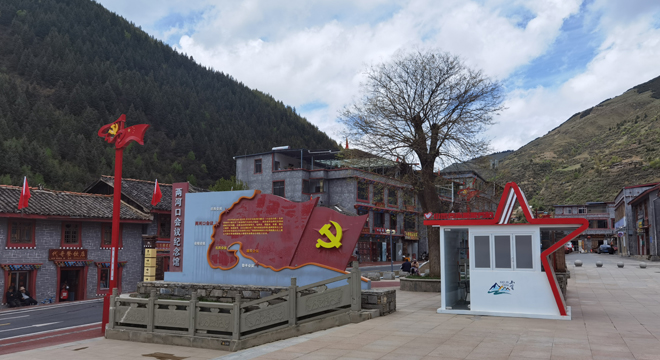
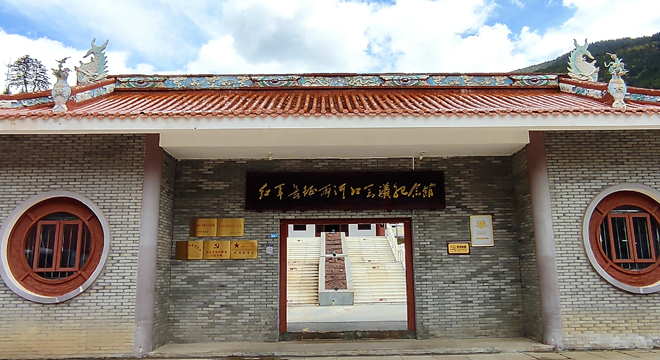
Plateau Rose Base
The Plateau Rose Base is a rose cultivation base located in Maoshui Village, Dawei Town, Xiaojin County. It adopts a development model of "branch + company + cooperative + Party members + farmers + base" to vigorously promote the highland rose planting industry. This base was initiated by Chen Wanghui, who discovered that two wild rose bushes on the edge of a crop field damaged by wild boars were not further damaged by the boars. This inspired her to plant roses in the village. Through exploration and practice, Xiaojin County not only cultivated high-quality Damask roses but also created the unique "Jinshan Rose" by grafting Shandong Pingyin roses with local wild roses. The introduction of rose cultivation to Xiaojin has explored a development model of "Party branch + company + base + cooperative + farmers". Through the path of scale and industrialization, it has continuously radiated and driven the development of the rose industry in surrounding villages, transforming years of abandoned land into a lucrative "fragrant cake" for increasing income and becoming prosperous. Rose products have been exported to countries such as Japan, Korea, and Bulgaria. The villagers affectionately call Chen Wanghui "Rose Sister". The success of this base not only provides local people with opportunities to increase their income but also promotes the development of characteristic industries in Xiaojin County, becoming one of the "five major industries" in Xiaojin County and driving more than 10,000 people to increase their income and become prosperous.
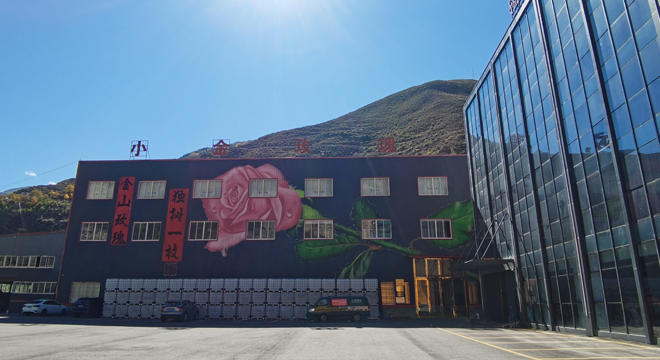
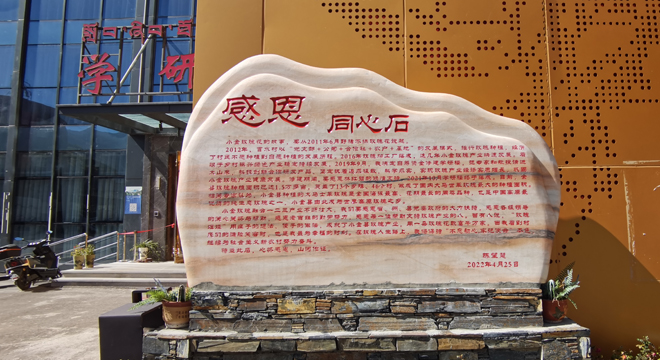
Skula Temple
Skula Temple, located in Siguniangshan, Xiaojin County, Aba Tibetan and Qiang Autonomous Prefecture, Sichuan Province, is a temple with a rich history and culture. The temple is situated within the Mount Siguniang Scenic Area, on the ancient trail of Changping Gou in minor Jinchuan, and is known as the "Eastern Alps". The history of Sigula Temple can be traced back to about two thousand years ago. It was originally a small Bon temple and later became a Buddhist Gelugpa temple, a subsidiary temple of Dawei Lama Temple. Inside the temple, there are two ancient cypress trees that have been blessed. According to legends, they were left by the great Tibetan translator Vairocana during his meditation, and they are still regarded as sacred trees by the local people today. Sigula Temple is not only a cultural landscape in the Mount Siguniang Scenic Area, but also the center of Tibetan belief, regarded as the tutelary temple of Mount Siguniang. The temple is open to the public free of charge from 7 am to 6 pm. Sigula Temple is not only a necessary place to pass through Changping Valley, but also a good place to experience Tibetan Buddhist culture. Tourists can feel the strong religious atmosphere and beautiful natural scenery here, and learn about Tibetan culture and history at the same time.
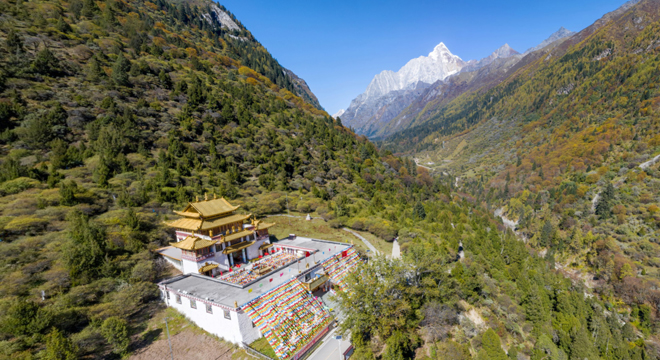
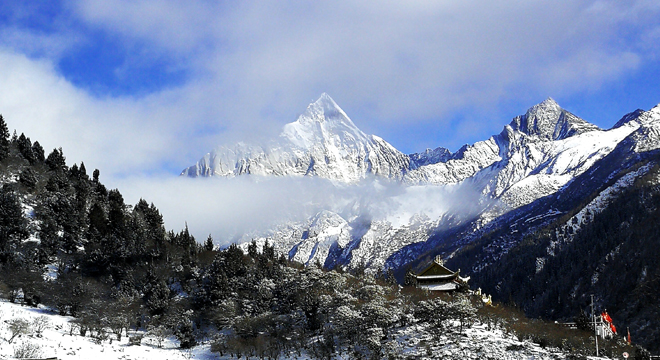
Dawei Junction Bridge
The Dawei Junction Bridge is located in Dawei Township, Xiaojin County, Aba Prefecture, Sichuan Province. It is a wooden bridge with a rubble and round wood structure, built in the early years of the Republic of China, running from northeast to southwest. This bridge is not only an important transportation route for the local people on both sides of the river, but also a famous revolutionary memorial site. The Dawei Junction Bridge is of great historical significance, as it is a historical testimony to the victorious junction of the First and Fourth Front Armies of the Chinese Workers' and Peasants' Red Army in June 1935.
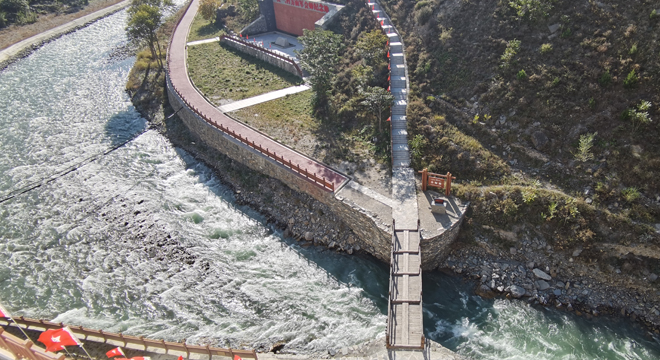
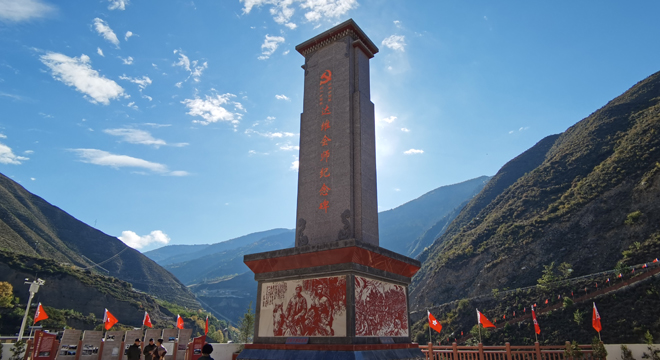
Chaoshan Flat
Chaoshan Flat is a high mountain meadow with an altitude of 3,670 meters, located within Mount Siguniang Scenic Area and surrounded by white poplars and rhododendrons. This place, covering an area of over 300 mu, offers different scenery in each season: lush green grass in spring, wildflowers blooming everywhere in summer, high skies and light clouds in autumn, and vast stretches of white snow in winter. It is not only an excellent location to view Mount Siguniang but also a venue where local Tibetan people hold the Worship of Mountain. On the fourth day of the fifth lunar month each year, local people gather here from all directions to hold a grand Worship of Mountain, commemorating the four girls who turned into peaks to block the flood and praying for good weather and peace in their villages. The beautiful scenery of Chaoshanping includes open meadows, lush forests, and distant snow-capped mountains. Especially on sunny days, the wind blows away the clouds and mist, revealing the dignified and holy snow peaks, providing people with visual feasts.
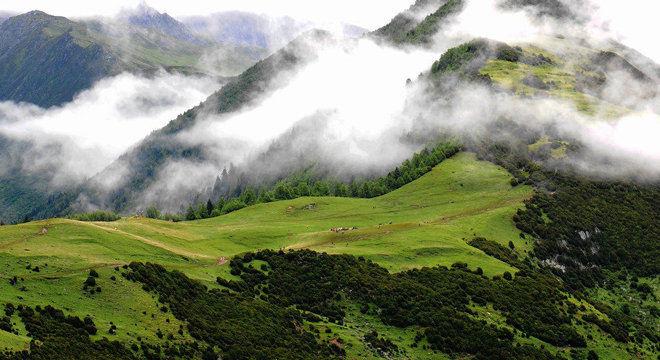
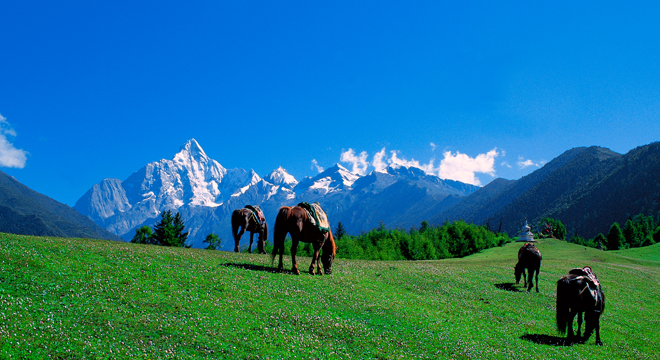
Jiesi Lama Temple
Jiesi Lama Temple is an ancient building with significant cultural and historical value. It is not only an important place for local residents to conduct religious activities, but also an important window for tourists to understand Tibetan Buddhist culture. Its existence enriches the tourism resources of Xiaojin County and contributes to the development of local tourism. In addition, the architectural style and internal decoration of Jiesi Lamasery also reflect the artistic characteristics of traditional Tibetan architecture, possessing certain artistic value and cultural significance.

Jiarong White Pagoda
As part of Tibetan culture, the Jiarong White Pagodas hold profound religious and cultural significance. They are not only symbols of Tibetan Buddhism but also serve as venues for villagers to gather for sacrificial ceremonies and welcome distinguished guests. In the Jiarong region, the construction of white pagodas reflects the Tibetan people's warm hospitality and religious beliefs. As a sacred architectural structure, the white pagodas are used by Tibetan believers for prayer and are considered holy objects that can suppress evil forces and protect believers' safety. In the Jiarong Tibetan area, prayer flags and wind horse flags can be seen everywhere, these colorful flags decorate the sacred Tibetan villages like rainbows, forming a unique scenic line. Furthermore, the construction of Jiarong White Pagodas also represents the Tibetan people's reverence for nature and deities. In the tradition of the Jiarong Tibetan people, white pagodas are important sacrificial sites where they express their respect and prayers to deities by walking around the towers and chanting the six-syllable mantra. This religious ceremony not only deepens the connection between believers and deities but also reflects the Jiarong Tibetan people's aspiration for harmony, peace, and prosperity.
